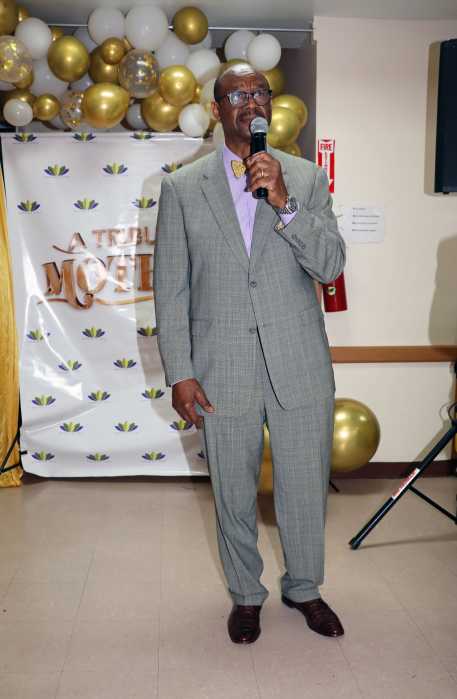BY ARTHUR S. LEONARD | As we approach the third anniversary of New York State’s Marriage Equality Law, which says that same-sex marriages and different-sex marriages will be treated equally for all purposes under New York law, this issue should be a no-brainer.
Apparently, in the view of some state courts, it is not. Otherwise it might not have taken an upstate judge 28 pages to answer the following question: What happens if two women marry, decide to have a child through donor insemination, and then have a parting of the ways shortly after the child is born? Can the biological mother insist on exclusive parental rights and exclude her spouse from contact with the child?
If the Marriage Equality Law means anything, the answer to that question should be no.
New York trial judge struggles to reach conclusion birth mother’s lesbian spouse is also a mother
And that is what Monroe County Supreme Court Justice Richard A. Dollinger concluded in a May 7 decision, but only after detailed and agonizing analysis.
The two women, unnamed in Dollinger’s opinion in a case titled Wendy G-M v. Erin G-M, married in Connecticut before New York enacted its marriage law, but decided to have a child in October 2011, several months after it went into effect.
They both signed a consent form agreeing to donor insemination procedures, as did their doctor, but the form was not notarized and so fell short of a New York legal requirement that such a form must be formally “acknowledged” to be valid. Both women participated in donor insemination, but once the birth mother became pregnant, the other mother stopped her effort. The couple jointly attended appointments at the fertility clinic, took pre-birth classes, and behaved as a family. On Facebook, the birth mother’s posted, “Our daughter will have two mommies when she arrives and a family that’s recognized wherever we go in the US.” (A bit too optimistic, since a majority of states still do not recognize same-sex marriages from other states.)
The other mom was present during childbirth, and the couple “jointly decided the name of the child,” according to Dollinger’s opinion. Hospital officials were told by the birth mother that her spouse was a parent of the child, who was given a hyphenated surname reflecting both mothers, with the birth mother’s spouse named first. The birth certificate listed both women as parents of the child, but after the birth, the spouse “left the household, in her words, to ‘not cause undue stress or potential other problems.’” By a week after the child’s birth, they had established separate households.
The birth mother filed the divorce proceeding in December 2013, less than three months after the child was born. Once she filed for divorce, she denied access to the child to her spouse, who then filed a motion seeking access to the child, maintenance expenses, and attorney’s fees.
Dollinger said the case could be analyzed using either a statutory or a common law approach. The statutory avenue, unfortunately, would lead through a complex maze of antiquated New York laws not adequately updated to reflect diverse types of families or progress in reproductive technology. Amazingly, New York’s statutes do not define “parent” and the courts have been left to fend for themselves without legislative guidance, leading to a variety of decisions, some widely deplored as unfortunate and out-of-touch with modern day family life.
Following a statutory line of analysis, Dollinger found, the spouse would be out in the cold in terms of parental rights.
The Marriage Equality Law, however, suggests this would not be an appropriate approach to take, because under long-established New York “common law” —– non-statutory law that arises from court decisions — there is a strong presumption that when a married woman gives birth, her legal spouse is the parent of the child. That traditional presumption grew out of the expectation that people obeyed now-defunct laws that the only lawful sexual acts were intercourse between a married different-sex couple. In other words, it was logical to assume that if a married woman became pregnant, the father was her husband.
Such a presumption would make little sense in the case of a same-sex couple, of course, if it were based solely on biology. This presumption, however, was employed to advance the preference in law that newborn children not be deemed “illegitimate” if at all possible.
Dollinger decided that this common law presumption, viewed in connection with the Marriage Equality Law’s requirement of equal treatment, and the uncontested fact that both women did sign the consent forms, even if they were not “acknowledged” to the satisfaction of New York statute, created a presumption that birth mother’s same-sex spouse is the child’s parent. This presumption, Dollinger said, is rebuttable to the extent there is evidence that this was not what the parties intended. Such evidence, however, did not exist in this case — as the consent forms, the Facebook posting, and the other conduct of the former couple during the insemination and pregnancy show.
Other courts around the state have reached similar results without the struggle evidenced in Dollinger’s decision, and of course women who marry their same-sex partners and have children probably routinely have the expectation that his conclusion is, in fact, the law.
But a trial court ruling does not establish precedent across the state, and it is unclear whether the birth mother intends to appeal.
The lawyers in the case are Jeanne Colombo from Rochester for the birth mother and Joanne Best from Brockport for the other mother.












